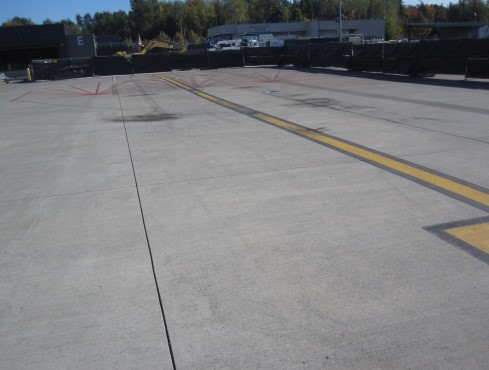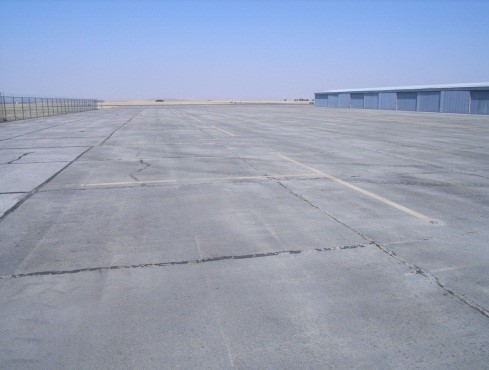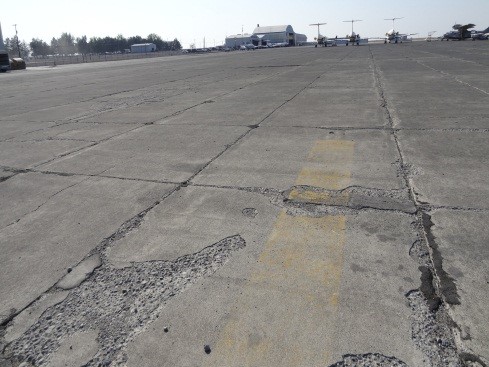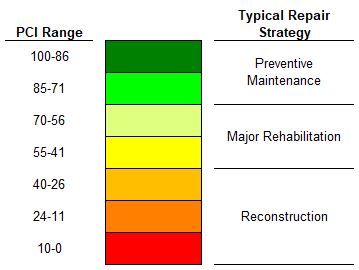Overview
Pavement Condition Index (PCI) Survey Procedure
The inspections were conducted using the PCI survey procedure documented in the following publications:
- FAA Advisory Circular (AC) 150/5380-6C, Guidelines and Procedures for Maintenance of Airport Pavements.
- FAA AC 150/5380-7B, Airports Pavement Management Program (PMP).
- ASTM D5340-12, Standard Test Method for Airport Pavement Condition Index Surveys.
The PCI procedure is the standard used by the aviation industry to visually assess pavement condition, providing engineers with a consistent, objective, and repeatable tool to represent the overall pavement condition. During a PCI survey, visible signs of deterioration within a selected sample unit are recorded and analyzed, as are distress type, severity, and quantity.
The results of a PCI evaluation provide an indication of the structural integrity and functional capabilities of the pavement. However, it should be recognized that during a PCI inspection only the top layer of the pavement is examined and that no direct measure is made of the structural capacity of the pavement system. Nevertheless, the PCI does provide an objective basis for determining maintenance and repair needs as well as for establishing rehabilitation priorities in the face of constrained resources. Furthermore, the results of repeated PCI monitoring over time can be used to determine the rate of deterioration and to estimate the time at which certain rehabilitation measures can be implemented.
Visual Representation of PCIs
During a PCI inspection, inspectors identify signs of deterioration on the surface of the pavement. Pavement defects are characterized in terms of type of distress, severity level of distress, and amount of distress. This information is then used to develop a composite index (PCI) that represents the overall condition of the pavement in numerical terms, ranging from 0 (failed) to 100 (excellent). A visual representation of the PCI scale is illustrated in the table below.
Table 1. Visual Representation of PCI Scale. | Representative AC Pavement Surface | Representative PCC Pavement Surface | PCI |
 |  | 100 |
 |  | 60 |
 |  | 5 |
Relationship to Repair Types
In general terms, pavements with relatively high PCIs that are not exhibiting significant load-related distress will benefit from preventive maintenance actions, such as crack sealing and surface treatments. As the PCI drops, the pavements may require major rehabilitation, such as an overlay. In some situations where the PCI has dropped low enough, reconstruction may be the only viable alternative due to the substantial damage to the pavement structure. The figure below illustrates how the appropriate repair type varies with the PCI of a pavement section.
 Figure 1. PCI Scale.
Figure 1. PCI Scale.The types of distress identified during the PCI inspection provide insight into the cause of pavement deterioration. PCI distress types are characterized as load-related (such as alligator cracking, corner breaks, and shattered slabs), climate/materials-related (such as weathering [climate-related] and durability cracking [materials-related]), and other (distress types that cannot be attributed solely to load or climate/materials). Understanding the cause of distress helps in selecting a rehabilitation alternative that corrects the cause and thus eliminates its recurrence.
The “Causes of AC Distress” and "Causes of PCC Distress" pages in this section contain tables for asphalt and PCC pavements, respectively, indicating the typical types of distresses that may be identified during a PCI survey, along with a brief description and the likely cause of each distress type.